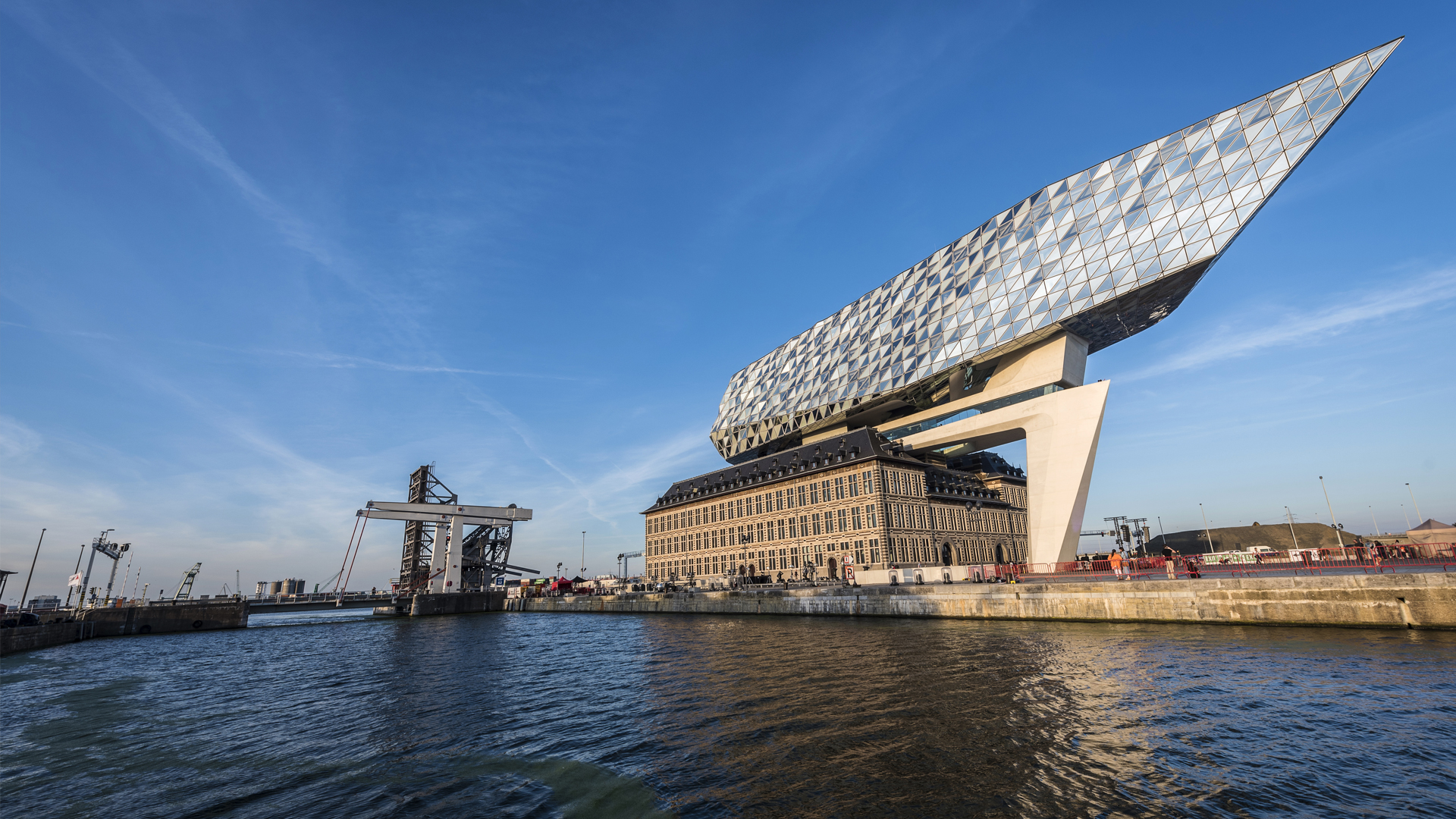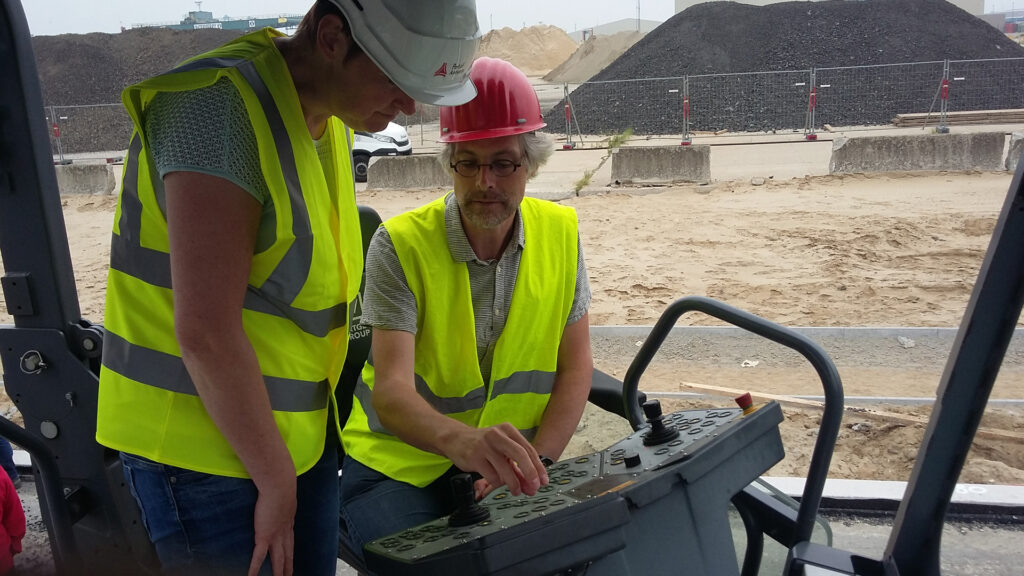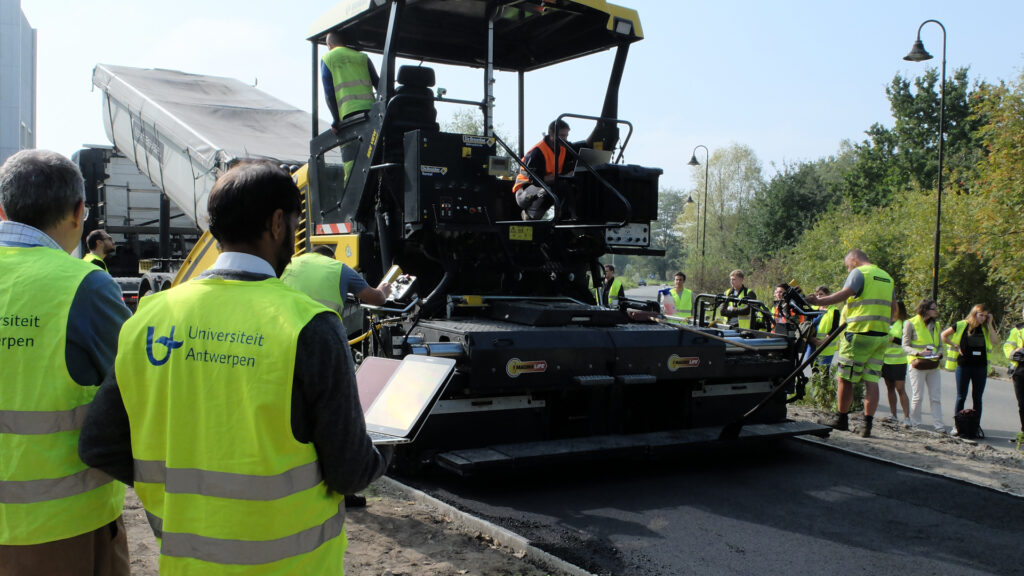The collaboration between our university and the Port of Antwerp is flourishing as never before. Some thirty research projects are currently underway. ‘The technologies we are investigating today could be part of our daily lives in just a few years’ time’, says project coordinator Svetlana Samsonova.
Cooperation between UAntwerp and the Port of Antwerp dates back to 2007, but in 2015 it was rebooted. ‘A new framework agreement was signed, with a stronger focus on more diversity, more research groups and more research topics’, explains Svetlana. The collaboration promptly moved up into a higher gear: the number of research groups involved in port projects annually has gone up from just three to fourteen this year. Ten new projects started in 2020. Efforts have also been made to tap into more diverse funding channels. And successfully: compared to 2017, the budget for cooperation projects acquired in 2020 has more than quadrupled.
Svetlana sees herself as a sort of matchmaker in all of this. ‘If the Port Authority has a specific problem, I go and look for the right researchers. And if a research group wants to test a certain concept, I put them into contact with just the right port experts.’ It helps that Svetlana has a broad network spanning both the university and the port, developed over years of work. ‘I worked in the port’s environmental department from 2015 to 2017’, says Svetlana, who is a geographer by training. ‘Then the position of Port of the Future Project Manager was created, with the aim of bridging the gap between academia and the Port Authority. I got the job, and since then I’ve been working for both UAntwerp’s Valorisation Department and the Port of Antwerp’s Innovation Department. The fact that I’m a member of both organisations opens a lot of doors.’
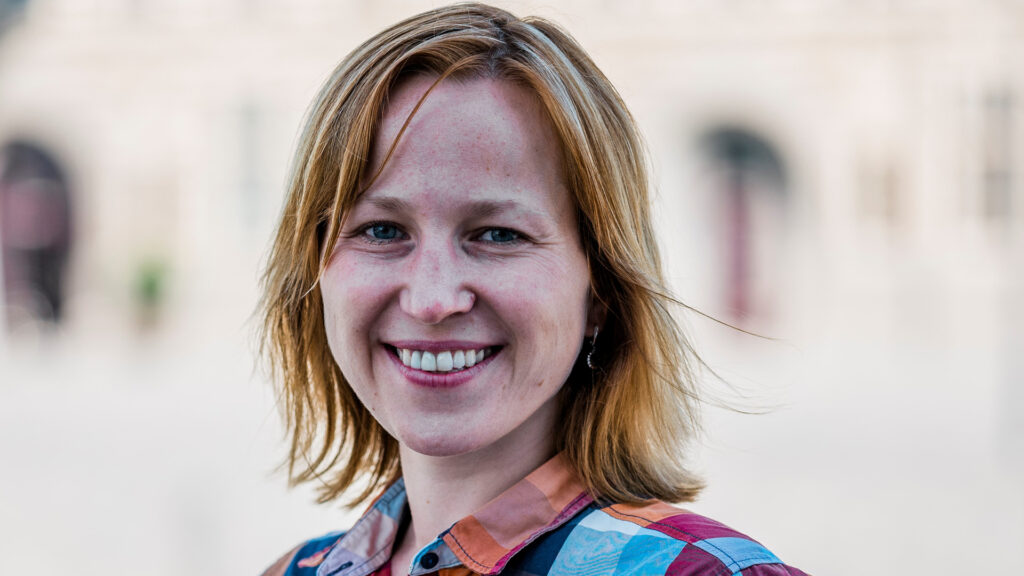
Wide range of research opportunities
The Port of Antwerp offers a wide range of research opportunities, and not only in the maritime and industrial sectors. Svetlana: ‘There are opportunities for research into sustainability, the environment, biodiversity, IT, and so much more. We have an enormous wealth of data, and we’re happy to make our infrastructure available for testing. Just yesterday, the CoSys-Lab research group came to our test vessel to carry out measurements with their 3D Sonar sensors. We’re looking into the possibility of using these as parking sensors for automated inland navigation. They’re a much cheaper alternative to conventional sensors and they also work better in poor weather conditions.’ What makes the Port of Antwerp interesting for research is that it’s a very real environment, and yet it allows for testing under controlled conditions, Svetlana continues. ‘This way, new techniques can be brought up to a higher technology readiness level (TRL) relatively quickly, resulting in a shorter time to market.’
The Antwerp Port Authority is keen to be seen as a Port of the Future. Svetlana: ‘In our search for projects, we always focus on innovation and sustainability. As a port, we have to be ready for the latest technological developments. To put it in a quote: “The science of today is the technology of tomorrow.” That’s another reason why cooperation with university researchers is so important.’
Smart asphalt
One of these researchers is Dr Wim Van den bergh with the EMIB (Energy and Materials in Infrastructure and Buildings) research group in the Faculty of Applied Engineering. He has been working with the Antwerp Port Authority on ‘smart asphalt’ for about five years now. Wim Van den bergh: ‘For some time now, the port has been looking for better materials for its road infrastructure. After all, the roads here have to support very heavy loads. In Flanders, public infrastructure works are usually bound by ‘Standard Specification 250 for Road Construction’, a guideline for building roads issued by the Flemish Agency for Roads and Traffic. That makes it difficult to use new technologies and materials that haven’t been described in it. And new techniques are not included in it because they haven’t been tested enough. So it’s a vicious cycle. A few years ago, the Port of Antwerp asked our research group to make its infrastructure more sustainable and to investigate new materials and road concepts. That’s how we’re trying to break that cycle. We’re basically being forced to think outside the box.’

Fibreglass as a crystal ball
The research group is currently working on a sustainable asphalt surfacing project. A new trial section will be built in the port next year, divided into four zones, each with different materials and techniques. All in all, about a dozen new materials and techniques will be used in the asphalt, the foundations and the sub-foundations.
The materials will also be evaluated in a special way. Instead of extracting cores for analysis, ‘fibre bragg grating’ will be used. ‘In a nutshell, this means we incorporate fibreglass sensors into the materials, which allow us to measure structural deformations’, explains Wim. ‘Taking into account the load they have to support, we can identify changes in the behaviour of the materials right from the start. Based on our measurements, we hope to be able to predict in just two or three years how the material will behave in the long term, allowing us to evaluate it. This is new in Flanders.’ A prototype of the system was previously installed at Campus Groenenborger and in the port.
‘Strong focus on innovation’
In addition, the research group has evaluated new techniques to monitor the quality of the asphalt process, called ROAD_IT. This includes a track-and-trace system for transport and delivery of the asphalt, as well as continuous infrared temperature measurements, so road construction can be monitored in real time. After all, the final quality is largely dependent on excellence during construction. On the basis of the data collected, the port can check whether construction has been carried out meticulously, and even award a bonus to the contractor involved. This system is already in place today.
Cooperation with the port is going very well, says Wim Van den bergh. ‘I’m always amazed at how readily engineers accept new technologies. They’re very innovation-minded, and they’re happy to provide insights and feedback. For instance, they often ask us about technologies developed abroad: can we use them in Antwerp too? Site supervisors are happy to help test our innovations, which we shouldn’t take for granted, as organising this often takes extra time and effort.’
WaterREACT: circular water use
Dr Marc Spiller and Dr Tim Van Winckel, both postdoctoral researchers in the Department of Bioscience Engineering, are also collaborating with the Port of Antwerp for their research. Their project is called WaterREACT, which stands for Water Reuse and Exchange Advanced Computational Tool. It focuses on circular water use in industry. The research is carried out by the Sustainable Energy, Air and Water Technology Research Group (DuEL), led by Prof. Siegfried Vlaeminck. Prof. Ivan Verhaert (UAntwerp) of the EMIB (Energy and Materials in Infrastructure and Buildings) research group is also involved.
‘Flanders has a huge water problem: it’s one of the driest regions in all of Europe’, explains Marc Spiller. ‘About 40% of our water consumption goes to industry. A survey carried out by VOKA, the Flemish network of enterprises, has revealed that seven in ten entrepreneurs fear they will face a water shortage at some point. Eight in ten have no alternative in the event of a water shortage. This past summer, the Blue Deal for Flanders was launched, a project which is pouring 75 million euros into the fight against drought and water scarcity. It puts circular water use forward as the norm.’
Cooperation and exchange
With WaterREACT, the researchers want to develop a tool that enables companies to handle water in a more efficient and environmentally friendly way. Marc Spiller: ‘Most companies’ water consumption today is very linear: the water is used once and then discharged back into nature. Our decision tool helps them switch to circular water use. As it turns out, it’s often possible to use the same volume of water several times throughout the production process. The aim is for several companies to work together and exchange water for this purpose.’
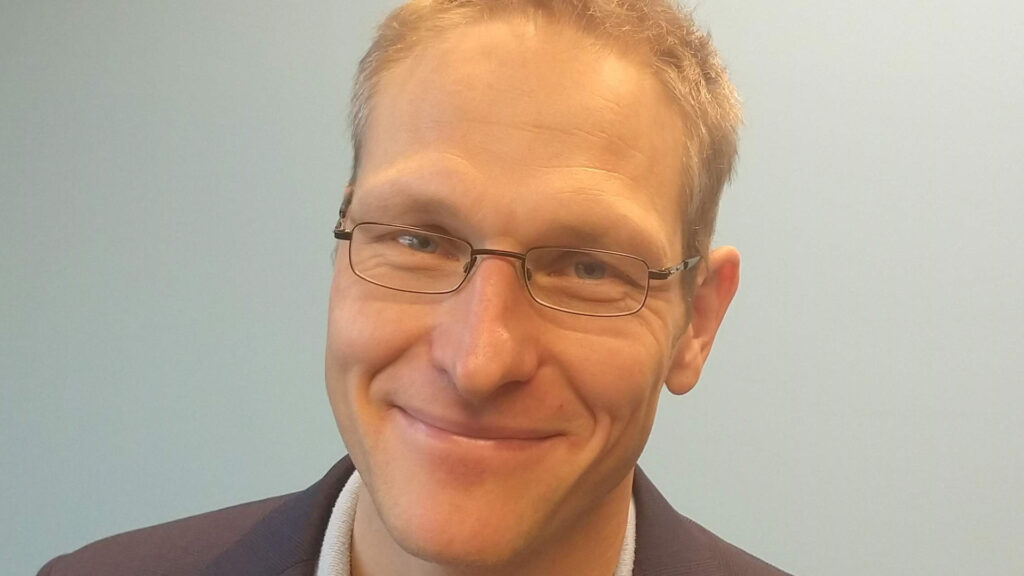
Water quantity, water quality and the need for water storage are all taken into account in this tool, as is the proximity of water sources and the need for water treatment. The calculations result in three key metrics: how much water would be saved, how much money would be saved, and what the impact on the environment would be.
‘What makes our tool so innovative is that it allows companies to calculate exactly which formula suits them best, after having fed their own data into the system. The end users we have in mind are mainly umbrella organisations. But state-owned companies, water producers and companies with a significant presence in the port – like BASF or Total – can also make good use of it’, Marc Spiller continues.
In consultation with the port
The idea had been gestating for some time. Marc Spiller: ‘Svetlana, who is well-informed about everything that goes on in the port, helped us get in touch with the right people. We fleshed out the project in consultation with various port experts, and we still regularly meet up to discuss things. After all, as end users, they have a lot of questions and they tell us exactly what they expect from such a system. In the meantime, we get access to the necessary data and companies.’ The current research project, which aims to develop a basic model, is set to run until the end of February and is being financed in full by the Antwerp Port Authority. The follow-up study, now approved as an IOF-PoC project, will run for one year.
If you have any questions about cooperating with the Port of Antwerp, or ideas for a project, don’t hesitate to contact Svetlana Samsonova on svetlana.samsonova@uantwerpen.be or +32 484 83 87 53.


